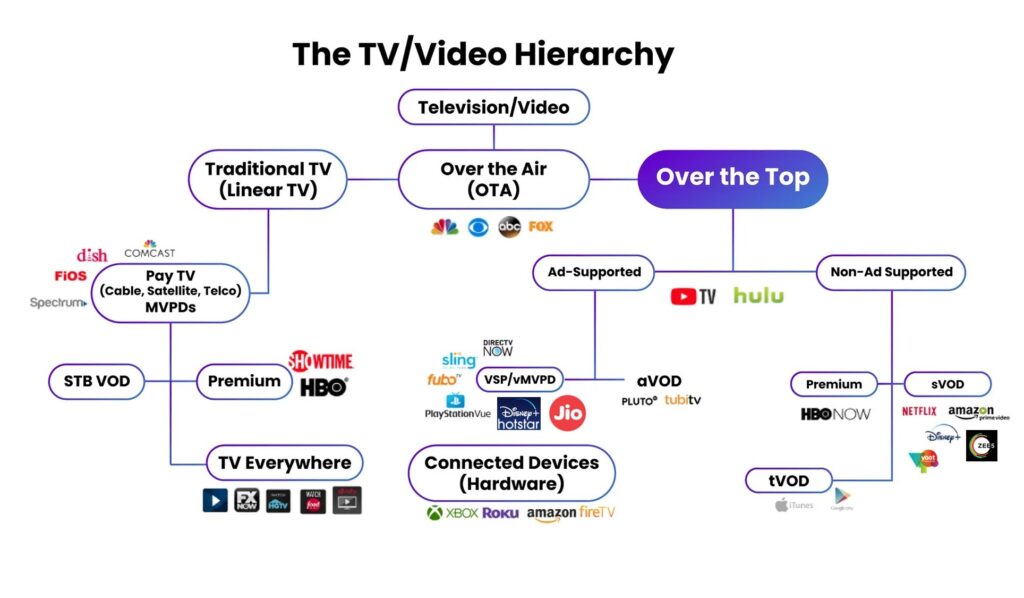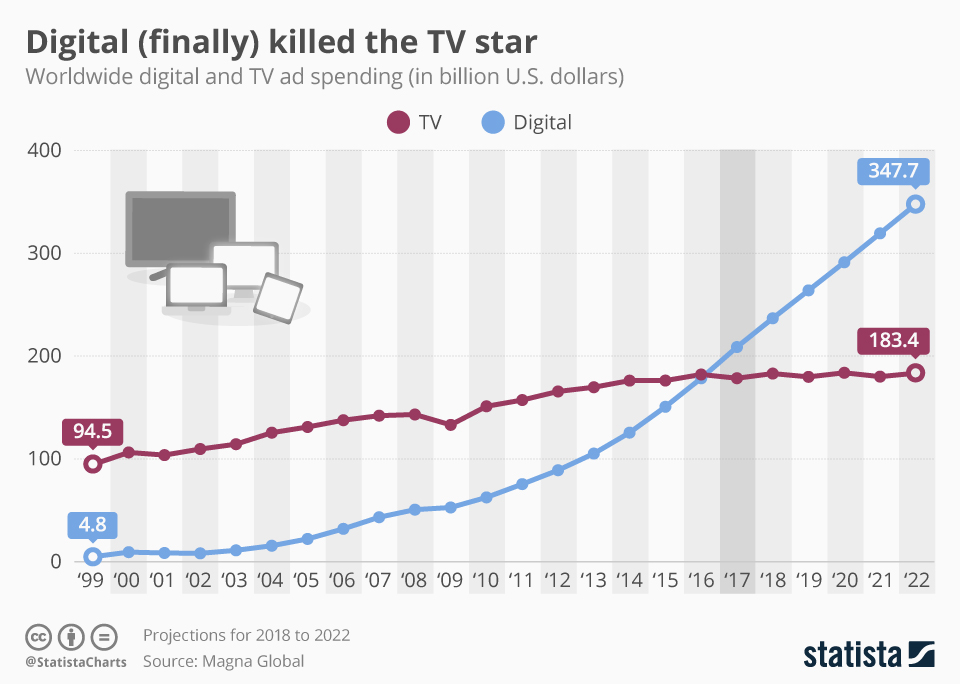To Stream or Not To Stream...
That is the question – for advertisers at least. From user-generated content on TikTok and Instagram to the ever-increasing number of streaming services, video is everywhere. If you are looking to get your ads in front of potential customers, where is the best place to purchase advertising? Traditional cable television advertising was a cornerstone in advertising campaigns for years. But, with the current shift in viewership to online-connected devices, streaming TV and programmatic over-the-top (OTT) ads now dominate the media buying landscape.
Streaming TV is More Targeted
Streaming TV ads run during content viewed through an internet-connected device rather than ads that run on traditional linear or cable television. These streaming ads will appear before or during content found on networks and apps that are referred to as “ad-supported”. While Netflix may be the first streaming channel that comes to mind, it does not currently feature ads within its content (not yet anyway). These platforms are referred to as “subscription-supported”.
Advertising via Streaming TV has many benefits compared to advertising through traditional, Linear TV. As a digital advertising medium, Streaming TV offers more robust targeting. Traditional TV advertising targets on the basis of factors (like ratings and time of day) that are less significant in the modern viewing landscape. However, Streaming TV allows advertisers to target based on data-driven variables such as demographics and interests. As a result, Streaming ads tend to garner higher rates of attention and engagement. Viewers tend to respond more positively when the ads they are served appear more relevant and less intrusive.
Streaming TV can be more Efficient
Advertising on Streaming TV platforms also allows for better measurement capabilities through real-time analytics. In terms of return on ad spend (ROAS), Streaming TV can be much more efficient for brands as rates are based upon cost per thousand (CPM). This means they only pay for the ACTUAL views and impressions their ad is receiving. Alternatively, traditional TV rates are based on ratings and projections. This method isn’t ideal as actual viewership can change dramatically, meaning fewer people see the ad than expected.
Advertising on streaming TV not only reaches an audience switching from (or splitting their viewing time with) traditional linear TV, but can also be more cost-efficient. Television advertising was typically reserved only for larger brands as linear advertising can require big budget commitments. CTV advertising on the other hand, can be purchased on a monthly basis and be spread across various campaigns and platforms. This makes it more accessible for small-to-medium-sized businesses (SMBs) to access. Hulu, for example, recently announced a self-service advertising platform that makes it easy for SMBs to schedule and run their own TV-ready video ads.
Traditional TV isn’t Dead Though
However, it’s still fair to say that traditional TV won’t be completely replaced by streaming services anytime soon. For many people, streaming is just another option to go along with their traditional TV watching. A recent report points out that more than half (51%) of Americans still have a traditional TV subscription, via cable, satellite or fiber optic. Of those who still have traditional TV, three-quarters (74%) also stream video. Traditional cable providers are also integrating streaming advertising with their linear offerings. This allows advertises to target customers who are watching cable – but without the box – via smart TVs, smartphones, and other internet-connected devices.
So, it’s really a question of “where do I find the biggest bang for my buck?” when it comes to video advertising.
Feeling overwhelmed by all the options? Don’t worry – we can help! Reach out for a consultation. We’ll figure out how to make streaming advertising work for you!



